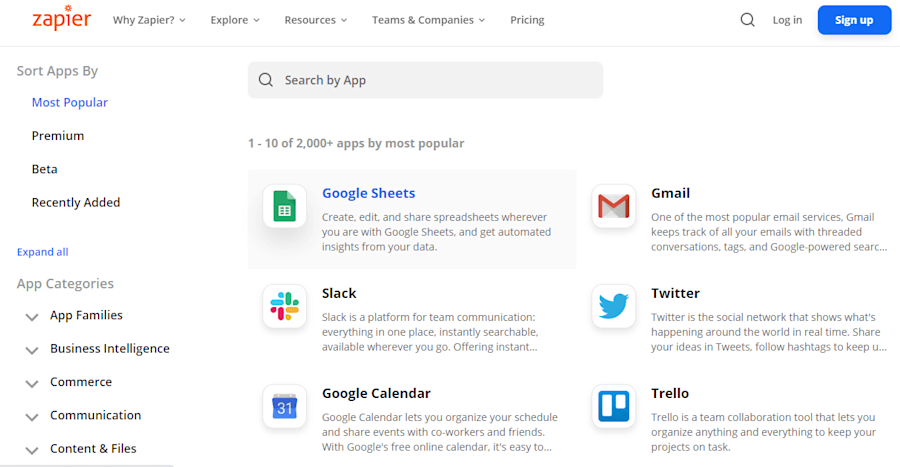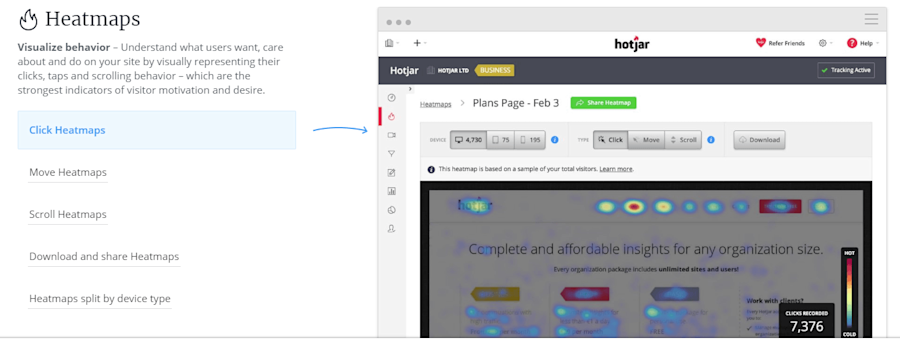It feels like every other week, there's a new must-do marketing strategy. Remember back when keyword stuffing was cool? If you were slick, you'd paste all those juicy keywords in white text on a white background and — boom — to the top of Google you'd go.
That worked for a few years. Now there are Vine and TikTok and Instagram stories.
It's enough to drive any marketer or salesperson mad. It feels like what worked yesterday won't work in another two weeks. The point is, it can be frustrating to stay up to date with the newest strategies.
That might have turned you off of using account-based marketing — surely it's just another fad that won't work in another two weeks, right?
Account-based marketing is close to our hearts here at Leadfeeder. Not because we think it's the end-all, be-all of sales and marketing, but because ABM is based on what has always been the key to sales — building relationships.
If you are considering ABM or if you have been hesitant to give it a go, you are going to want to watch our recent webinar with Jaakko from Leadfeeder and Casper, the traffic manager at Templafy.
Before we dive into the meat of the webinar, let's go over what, exactly, Templafy is and why ABM is so critical to their growth.
Note: Want to target the best leads for your ABM efforts? Sign up for free Leadfeeder's 14-day trial to learn how to optimize your ABM strategy with the right data.
What is Templafy?
Templafy solves what they call document anarchy. Inside of all your office platforms, Word, PowerPoint, Excel, even your Outlook email signature, there are a lot of images.
People often have a hard time controlling brand logos, fonts, and distribution of these things. Templafy helps keep all these things on-brand and compliant at all times.
But they also offer a ton of different tools, which they call modules. Casper shared,
"We have six different modules --a library, dynamics, builder, brand checker, email signature manager, and administration. Essentially these are all different modules that the companies can be interested in, which means that we can be extremely focused on what we talk about to the specific customers."

The TL;DR version is that Templafy offers solutions that appeal to different types of companies, and account-based marketing lets them target particular companies with the solutions that would most interest them.
In today's webinar, Casper shared tips and strategies they use at Templafy to grow their business. But, before we dive into the actual process, let's talk about what account-based marketing is.
What is account-based marketing?
Account-based marketing is a strategy that flips the traditional inbound marketing funnel upside down. The traditional sales funnel is wide at the top — you want to capture as many leads as possible, right?
You whittle that list down in the middle of the funnel — this is where you are looking for people who are almost ready to buy or really in your core target audience.
You might use retargeting, have salespeople work to educate them or send them content that helps move them towards actually being able to purchase.
Finally, you've got the bottom of the funnel — this is where you close the deal. You've gotten rid of the riff-raff, these are only high-quality leads that you are pushing to convert.
In ABM, the funnel is flipped —- rather than casting a wide net; you are laser-focused on precisely who you want to target.
You aren't just saying "Oh, we want to target enterprise companies, you can say "Well, Pepsi just released a new website, and they could really benefit from our product, let's go after Pepsi."
You might create content that shows Pepsi why you are so awesome.
ABM can be more expensive, but it's also more effective. Imagine you are looking to catch a rare type of lobster— does it make more sense to use a huge net and catch everything in the ocean and toss out what you don't need, or a small crab trap with specific bait that the rare lobsters like?
How to create a stellar ABM strategy
Ready to start leveraging ABM? Here's the tips Casper shared about how they use ABM at Templafy.
Identify interest patterns
Interest patterns are compelling because it shows not just who people are, but what they are interested in. Casper shared an example of a company who visited their site — he could see they came through Google, but more importantly, they searched for "template software," which is relevant to their company.
They spent nine minutes on their site and looked at a total of 12 pages, so they spent a long time on the site. But they spent the most time looking at template management and document content management.
Using Leadfeeder, Templafy can get a ton of information about that lead, including where they work and possibly even their email address.
You know what they are interested in, and you can give that information to your sales team to use — or you can use that information to set up specific campaigns.
Set specific campaigns based on interest patterns
Once you know what a specific prospect is interested in, it's time to start building campaigns specifically for them. Say you have a company visiting your site from New York and you think,
"Ok, if you're based in New York, and you're looking specifically at these things on our site, I have a strong feeling of what you are interested in." You might know they are in marketing, media communication, or project management.
Then you can target their specific function. And because you know so much information about them, you can be really, really be specific in your targeting. At Templafy, they often use Linkedin for these types of hyper-targeted ads that target people who work at specific companies.
Casper shared,
"We use LinkedIn a lot for this 'cause it can be very specific, is that you need to have at least 300 people in your audience to actually target them, so it needs to be some, like the companies you're targeting with this, I would recommend at least that you need to have some sort of value."
Use Zapier to set up integrations
Zapier is essentially an automation tool that helps connect data between platforms. If you have a platform or a tool such as Leadfeeder and you want to connect that data to another tool to use that data, then Zapier is your guy. Even if there isn't a natural integration, Zapier can usually fix it.
Zapier can help integrate more than 2,000 different tools. It's pretty impressive — and it can make it so much easier to get the most out of your data.

So what you can do is set up a Zapier integration that says whenever a new lead comes in on this specific feed and with 500-plus employees and they're not connected to our Salesforce, then they're sent over to a Google Sheet.
Using Leaderfeeder, you get company names, city, country, industry, website URL, where they've been, page views, all these different cool things.
All this information is updated regularly every day. Whenever there are new companies that come in that are not in Salesforce, they end up here. If you've ever worked with retargeting before, this is pretty similar.
You can even exclude current customers, or competitors, or whoever you don't want to end up in that sheet. And then you can use that information to create targeted ads or have a salesperson reach out, or whatever your sales process is.
Track interaction with Hotjar
Another way to get a ton of information is to combine the data you are getting with Hotjar. This is pretty aggressive, but it can give you a ton of valuable data.
Hotjar is a tool that doesn't just give you numbers about how users interact with your site — it shows you exactly what they do with heatmaps, recordings, even surveys and polls.

You can track actual session recordings by matching the IPs with those of Hotjar, and then you can find out what they looked and what actions they took.
Did they look at a specific page, hover over a button? Were they thinking about signing up for your email list but didn't? Hotjar can be really time-consuming, but it's also valuable information, especially if you are targeting big accounts.
Using a strategy like this gives salespeople so much more insight and confidence when approaching prospects because they know exactly what they are interested in and — even more importantly — how responsive they are. It's a great feeling to walk into a meeting with all that information already in your head.
Final thoughts
A lot of companies stay focused on "the way things have always been done." Using ABM and tools like Leadfeeder, Hotjar, and Zapier can help automate the process of understanding prospect behavior. It also helps bring insight from the marketing team to the sales team so they can close more deals.
Casper had a ton more great information to share in the full webinar, including a Q&A session at the end. If you want to learn more, watch the recap here.
Note: Want to target the best leads for your ABM efforts? Sign up for free Leadfeeder's 14-day trial to learn how to optimize your ABM strategy with the right data.
Now that you're here
Leadfeeder is a tool that shows you companies that visit your website. Leadfeeder generates new leads, offers insight on your customers and can help you increase your marketing ROI.
If you liked this blog post, you'll probably love Leadfeeder, too.
Sign up







